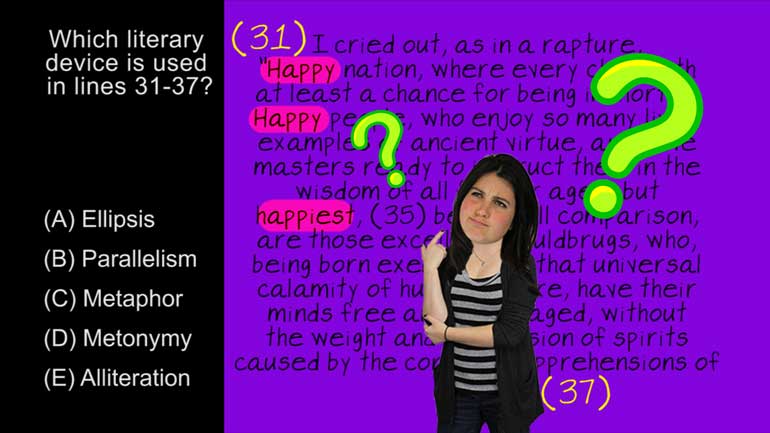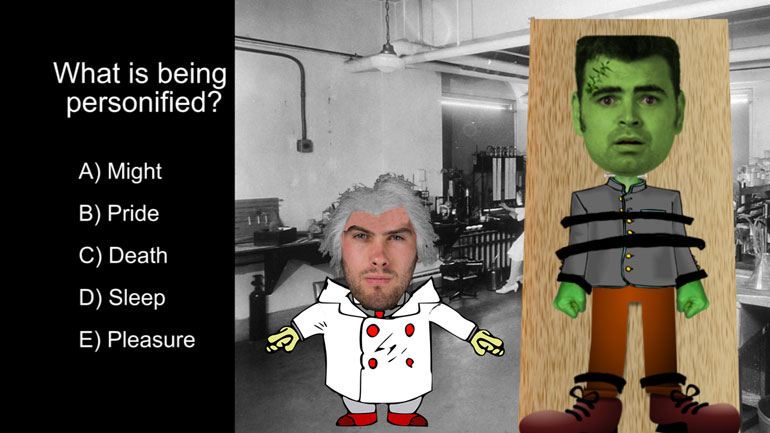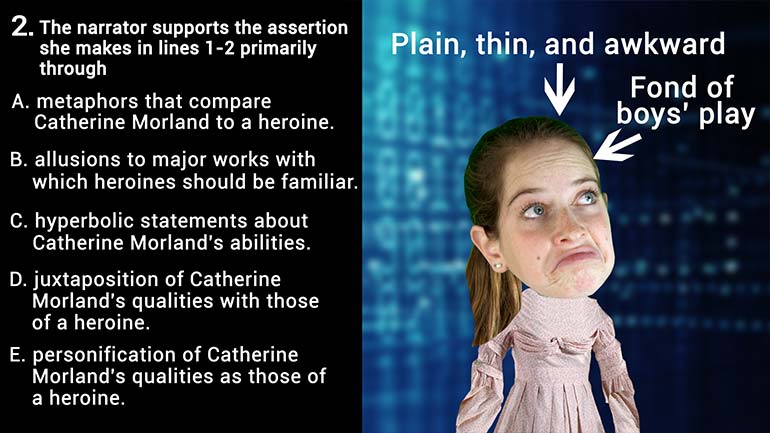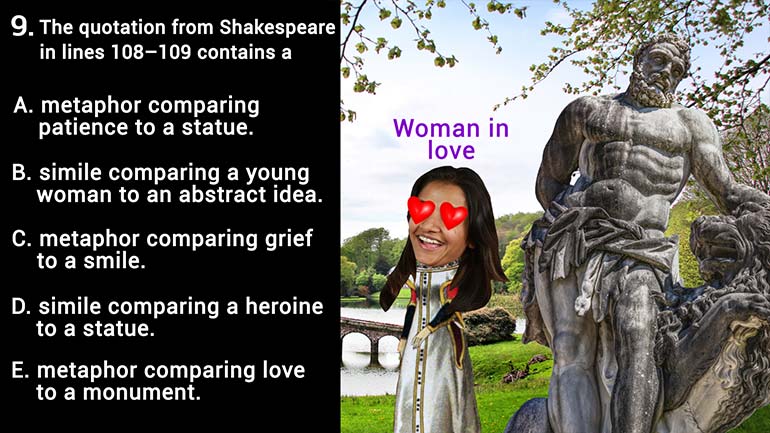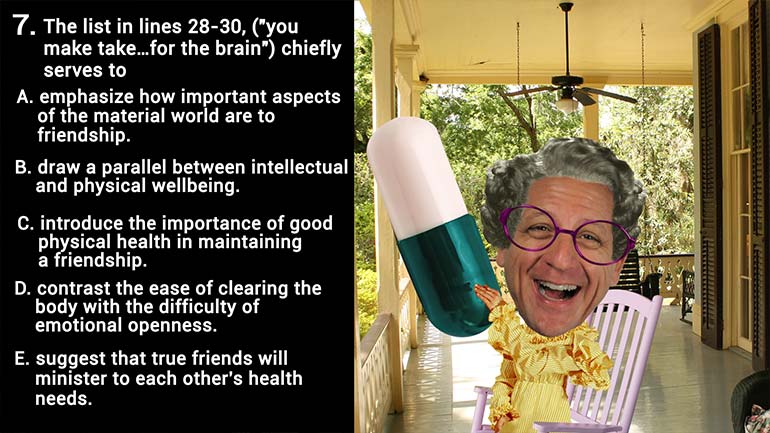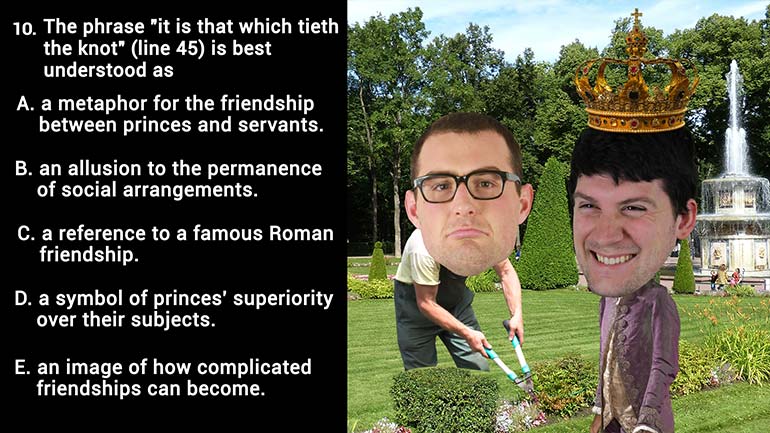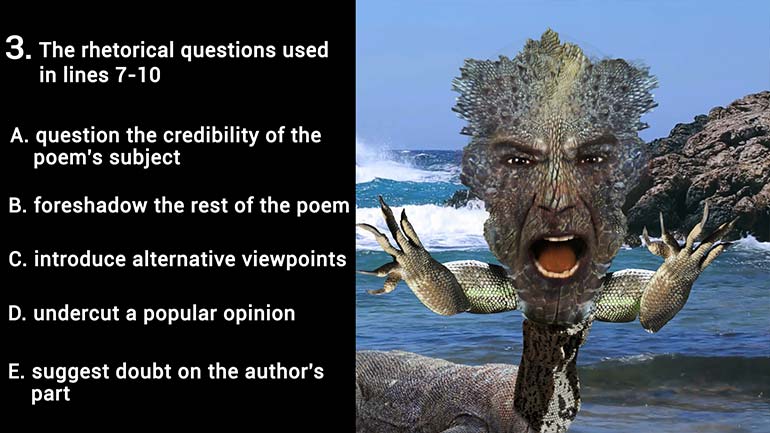ShmoopTube
Where Monty Python meets your 10th grade teacher.
Search Thousands of Shmoop Videos
Identifying uses of figurative language Videos 7 videos
AP® English Literature and Composition Passage Drill 1, Problem 1. Which literary device is used in lines 31 to 37?
AP English Literature and Composition 1.6 Passage Drill 3. To what is war being compared in line 2?
AP English Literature and Composition 1.2 Passage Drill 5. What is being personified?
AP English Literature: Clever Ways to Make Comparisons 6 Views
Share It!
Description:
The quotation from Shakespeare in lines 108–109 contains a
Transcript
- 00:00
No Okay Next up for AP England The quotation from
- 00:08
Shakespeare in lines hundred fifteen hundred seventeen contains a what
- 00:15
And that a young woman in love always looks like
- 00:18
patience on a monument smiling at grief The simile found
- 00:28
originally in twelfth night compares a young woman in love
Full Transcript
- 00:31
to an abstract idea personified in a monument or sculpture
- 00:36
The use of the capital letter for patients gives it
- 00:38
away even if we hadn't a clue to what Twelfth
- 00:42
night Wass And like what was wrong with the eleventh
- 00:44
night of the tenth one Well nothing sounds more romantic
- 00:48
than personifying an abstract idea in sculpture Right Take that
- 00:52
flowers and chocolate Yeah We're going to give you one
- 00:54
naked David There All right So the answer here is
- 00:57
be similarly comparing a young woman to an abstract idea
- 01:00
and the loser brawl wells pretty easy The line alludes
- 01:03
on ly to a young woman in love not a
- 01:05
heroine and does not compare the young woman to the
- 01:07
statue itself Be a metaphor Doesn't use like or as
- 01:11
so you can just get rid of a CNI right
- 01:14
off the bat And that's it just leaves you be
- 01:16
on that little simile there smiling Yeah Go for it 00:01:20.43 --> [endTime] David
Related Videos
In line 27, the adjective "inexpressible" is used
The list in lines 28-30, ("you make take sarza for the liver…castoreum for the brain") chiefly serves to
The phrase "it is that which tieth the knot" (line 45) is best understood as
The phrase "the heavy scent of latest America" (line 13) is best interpreted as
